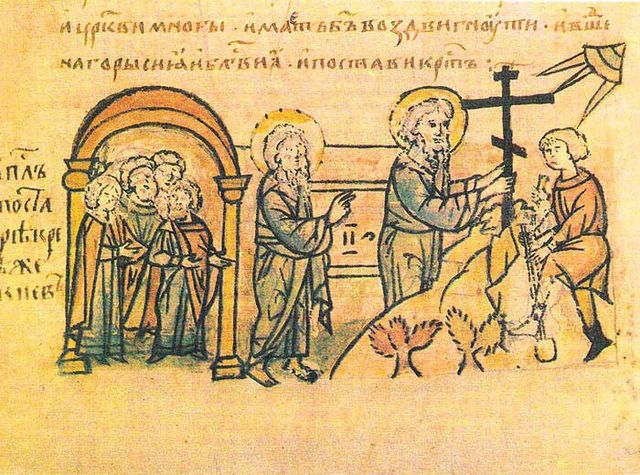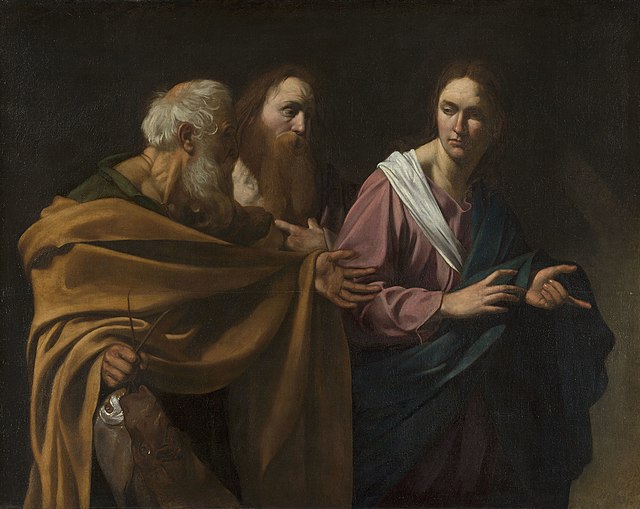History of Christianity in Ukraine
The history of Christianity in Ukraine dates back to the earliest centuries of the history of Christianity, to the Apostolic Age, with mission trips along the Black Sea and a legend of Andrew the Apostle even ascending the hills of Kiev. The first Christian community on territory of modern Ukraine is documented as early as the 9th century with the establishment of the Metropolitanate of Gothia, which was centered in the Crimean peninsula. However, on territory of the Old Rus in Kiev, Christianity became the dominant religion since its official acceptance in 989 by Vladimir the Great, who brought it from Byzantine Crimea and installed it as the state religion of medieval Kievan Rus (Ruthenia), with the metropolitan see in Kiev.
St Andrew's prophecy of Kiev depicted by his raising a cross, in the Radziwiłł Chronicle.
The ruins of Korsun (Chersonesos) Crimea, a place where East Slavic Christianity was born.
An Eastern Orthodox Icon depicting Equal-to-apostles Cyril and Methodius brothers as the Christian saints.
The Baptism of Kievans, a fresco by Viktor Vasnetsov.
Andrew the Apostle, also called Saint Andrew, was an apostle of Jesus. According to the New Testament, he was a fisherman and one of the Twelve Apostles chosen by Jesus. The title First-Called stems from the Gospel of John, where Andrew, initially a disciple of John the Baptist, follows Jesus and, recognizing him as the Messiah, introduces his brother Simon Peter to him.
Saint Andrew (c. 1611) by Peter Paul Rubens
The Calling of Saints Peter and Andrew by Caravaggio (1603–1606)
The crucifixion of Andrew the Apostle. Miniature from the Menologion of Basil II.
Saint Andrew of Patras cathedral, where Saint Andrew's relics are kept








